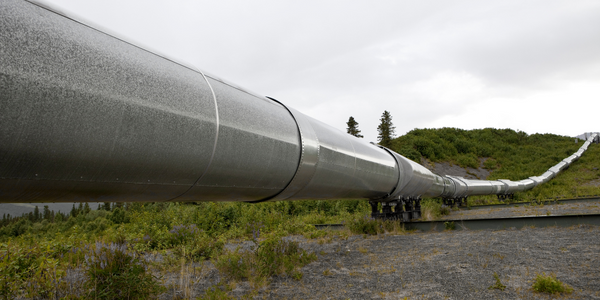技术
- 基础设施即服务 (IaaS) - 私有云
- 平台即服务 (PaaS) - 应用开发平台
适用行业
- 医疗保健和医院
- 石油和天然气
用例
- 库存管理
- 供应链可见性(SCV)
关于客户
Carta 是一家总部位于旧金山的公司,专门从事资本表管理和估值软件。该公司的使命是创造更多所有者,并提供一个帮助公司、员工和投资者管理估值、股权和投资的平台。它还在统一平台上提供公司所有权的实时图片。 Carta 运营着CartaX,这是一个私人股票市场,允许股东在公司上市前出售股票。 2021年,该公司通过自有平台出售股份筹集了5亿美元的融资。该公司拥有 1,700 多名员工,并使用 Greenhouse 作为其申请人跟踪系统 (ATS)。
挑战
Carta 是一家资本化表管理和估值软件公司,其招聘流程面临重大挑战。招聘人员手动维护候选人电子表格以保持工作流程的运转,这导致他们几乎无法了解同事的渠道。该公司还将招聘工作扩展到新的地理区域,但他们不清楚自己的招聘渠道在这些新地区应该是什么样的。他们需要渠道视图,以便向招聘经理展示他们的全渠道工作,尤其是高层的工作,并更好地衡量新地区的人才市场。此外,招聘人员需要一种更简单的方法来查看吞吐率,以评估渠道的健康状况并确定可以利用流程改进的领域。
解决方案
Carta 采用了 Gem(一种交互式协作招聘仪表板)来应对这些挑战。借助 Gem 的人才管道,Carta 的招聘人员和经理可以在一个视图中轻松了解候选人在漏斗每个阶段的位置。招聘人员可以在招聘经理关心的阶段专门筛选候选人,确保正确的利益相关者收到正确的数据。人才管道还提供了全漏斗洞察,使团队能够回答重要问题,例如某些角色是否比其他角色拥有更健康的漏斗,以及是否存在可以从一个漏斗应用到下一个漏斗的最佳实践。 Gem 的综合视图使 Carta 的团队能够了解候选人在漏斗每个阶段的位置,无论该职位的招聘人员是谁。这对于 Carta 拥有汇集模型的职位特别有用,其中多个招聘人员从同一个职位中为相同的职位进行招聘。 Gem 的 ATS 集成还确保招聘人员标签与 Carta 的 Greenhouse 数据相对应。
运营影响
数量效益

Case Study missing?
Start adding your own!
Register with your work email and create a new case study profile for your business.
相关案例.

Case Study
Taking Oil and Gas Exploration to the Next Level
DownUnder GeoSolutions (DUG) wanted to increase computing performance by 5 to 10 times to improve seismic processing. The solution must build on current architecture software investments without sacrificing existing software and scale computing without scaling IT infrastructure costs.

Case Study
Remote Wellhead Monitoring
Each wellhead was equipped with various sensors and meters that needed to be monitored and controlled from a central HMI, often miles away from the assets in the field. Redundant solar and wind generators were installed at each wellhead to support the electrical needs of the pumpstations, temperature meters, cameras, and cellular modules. In addition to asset management and remote control capabilities, data logging for remote surveillance and alarm notifications was a key demand from the customer. Terra Ferma’s solution needed to be power efficient, reliable, and capable of supporting high-bandwidth data-feeds. They needed a multi-link cellular connection to a central server that sustained reliable and redundant monitoring and control of flow meters, temperature sensors, power supply, and event-logging; including video and image files. This open-standard network needed to interface with the existing SCADA and proprietary network management software.

Case Study
Refinery Saves Over $700,000 with Smart Wireless
One of the largest petroleum refineries in the world is equipped to refine various types of crude oil and manufacture various grades of fuel from motor gasoline to Aviation Turbine Fuel. Due to wear and tear, eight hydrogen valves in each refinery were leaking, and each cost $1800 per ton of hydrogen vented. The plant also had leakage on nearly 30 flare control hydrocarbon valves. The refinery wanted a continuous, online monitoring system that could catch leaks early, minimize hydrogen and hydrocarbon production losses, and improve safety for maintenance.

Case Study
Hospital Inventory Management
The hospital supply chain team is responsible for ensuring that the right medical supplies are readily available to clinicians when and where needed, and to do so in the most efficient manner possible. However, many of the systems and processes in use at the cancer center for supply chain management were not best suited to support these goals. Barcoding technology, a commonly used method for inventory management of medical supplies, is labor intensive, time consuming, does not provide real-time visibility into inventory levels and can be prone to error. Consequently, the lack of accurate and real-time visibility into inventory levels across multiple supply rooms in multiple hospital facilities creates additional inefficiency in the system causing over-ordering, hoarding, and wasted supplies. Other sources of waste and cost were also identified as candidates for improvement. Existing systems and processes did not provide adequate security for high-cost inventory within the hospital, which was another driver of cost. A lack of visibility into expiration dates for supplies resulted in supplies being wasted due to past expiry dates. Storage of supplies was also a key consideration given the location of the cancer center’s facilities in a dense urban setting, where space is always at a premium. In order to address the challenges outlined above, the hospital sought a solution that would provide real-time inventory information with high levels of accuracy, reduce the level of manual effort required and enable data driven decision making to ensure that the right supplies were readily available to clinicians in the right location at the right time.









